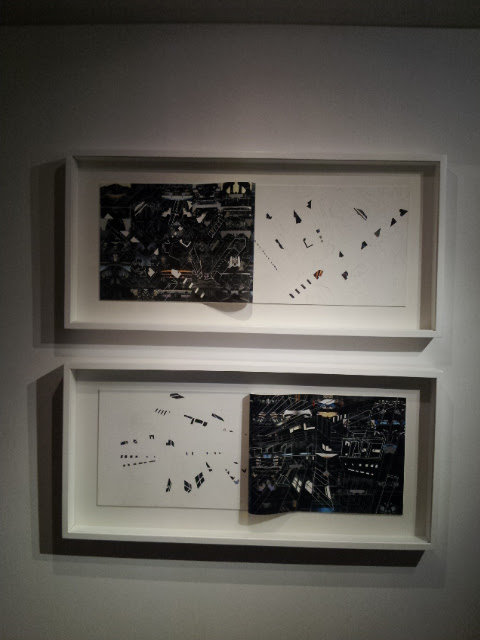measure | decipher
A Review
A Review
Mashed-up images of development trapped within webs of urban visions define geographies of Pratap Morey’s perspectival landscapes. Morey assumes the dual role of an architect and a surgeon in crafting the tumultuous landscape of Mumbai. He demonstrates in his works the nature in which erasure of old urban fabrics is brought about by simultaneous processes of imagination and operation - an imagination of the “clean” and “beautiful” often projected through perspectival visionary drawings by architects and developers on one hand, and the surgical “removal” of the old & “resurfacing” it by the new built form on the other. In doing so, the pinched protruding beast-like building forms on the flatly imagined cityscape almost announce an organized war, bulldozing and consuming the older neighbourhoods.
The tension between the old and the new is primary to all of Morey’s works. Metamorphosed photographs of emerging buildings seem to engulf the fragile outlined memories of older environments. In another series, a web of perspective fabric entraps hallucinations of perpetual construction activity. In yet another, scaffolds, reinforcements, unfinished framed structures inscribed within the ordered perspective create a fractal-like space, at once lending the ungraspable process a measurable dimension. Such overlaps reorient the coordinates of former living conditions.
One particular image within the polyptych, ‘Superimpose V’, is extremely poignant – it shows the outline of a man seated in his older space overlapped over an unfinished metamorphosed building skin. Within the logic of artist’s current work, the viewer is compelled to read the narrative of the replacement of the older domestic setting by new standardized spatial products. However, on another view, the outlined man seems to be trapped within the dilemma of the old and the new, literally as if the building-skin was a cage. Further, the man could also be working out his wilful transition into the new environment. It is the ‘wilful’ that finds little place within the heuristics of Morey’s works. The city seems to be an imposition within the antithetic vocabulary of black & white, order & disorder, drawing (unfinished) & photographs (finished), clean & busy, or on the other hand then & now, before & after. Narratives of several lives that inhabit the in between space of aspiration, creation and even appropriation of the ‘new’ and ways in which the city gets owned yet again shall lead to the loosening of Morey’s perspectives, perhaps resulting into an abstract sensuous medieval cartography.




















No comments:
Post a Comment